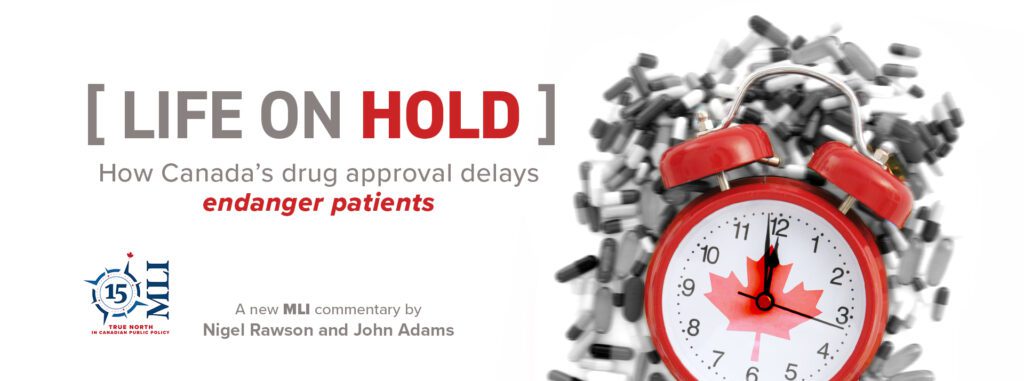By David Zitner, April 1, 2025
The costs of Canada’s health care system is rising three times faster than inflation, far outpacing increases in food or housing. This relentless rise in spending is not just a budgetary concern, it’s a fundamental challenge to Canadian’s health.
The root of the issue lies in a health care system that is inefficient and neither evidence-based nor patient-centered. From rushes to embrace inefficient team-based care, to the continuation of inappropriate treatments (such as coronary artery stenting in asymptomatic patients) rule-followers are rewarded, even in the absence of evidence. Unfortunately, health care funding and practices are often influenced by political negotiations rather than patient outcomes, even when there is adequate data available to properly guide decision-making. We have the technology to use health records to track and assess patient outcomes more effectively and to build evidence-based health policy.
If we are serious about building an effective health care system, we must demand that it finally be driven by data, rigorous research, and an unwavering focus on patients.
Adequate information for informed consent: gender-identity interventions
We need to improve information-sharing between doctors and patients. Medical recommendations, especially those related to controversial treatments like “gender-affirming” interventions, need to be based on strong scientific evidence. While most, but not all, medical recommendations are based on scientific research, when convincing evidence is missing doctors offer medical advice using intuition or best guesses. However, they are still obliged to track the fate of people who receive unproven treatments. Clinicians must inform patients when recommendations are controversial or based on intuition and not strong research evidence. Doctors should be confident that patients understand the information, including what is known about chances of overall benefit or harm. However, for unknown reasons, clinicians and regulators sometimes withhold information from patients and elect not to track the results of care. When patients make decisions based on faulty or incomplete information, they are more likely to end up regretting their health care choices.
This is especially important when it comes to medical interventions involving youth with gender issues. Doctors in Canada and beyond have prescribed puberty blockers and offered surgeries to both boys and girls who claim to be the opposite sex. These interventions can have dramatic and harmful short- and long-term consequences. Despite the controversy surrounding these interventions, Canadian and American regulators have not insisted that clinicians and researchers systematically track the long-term results and satisfaction of youth receiving gender-related interventions.
Post-intervention follow-up is crucial for identifying those most likely to suffer regret or medical complications, and to learn about the long and short-term results of such procedures. Some patients have described “the long, lonely road back from transition” after regretting gender interventions, including aggressive medical and surgical treatments. Without appropriate research, gender-related medical interventions are shots in the dark – and without information, informed consent is not possible.
Evidence is necessary not only for clinical care, but also for health services administration, especially the management of clinician time and resources. Excessive administrative burdens, including paper work, steal time away from patient care and lead health systems to need more doctors to care for the same number of people.
The clinicians’ responsibility is to care for patients, not paper
In a perfect world, clinicians would spend most of their time seeing patients, with only minimal effort spent filling out forms or making appointments. Unfortunately, the system burdens doctors with mountains of paperwork and red tape that often do not influence patient results.
Provincial health insurers and professional regulators enforce rules that dictate, in general terms, what must be included in a patient’s health record. Occasionally, officials review physicians’ records to check the accuracy of billing claims. Reviewers do not usually relate the information in the charts to patient feedback about their clinical state. The also don’t ask if the patient is better or worse off as a result of care. The rich information in medical chart entries is rarely used for research.
In some provinces, provincial health insurers perform periodic, random, audits of physician health records. The “audits” by provincial paying agencies merely examine the details and internal consistencies in the health records. They do not review whether the notes in the record are an accurate reflection of the patient’s problem, nor the appropriateness of treatment. Provincial health departments seem to care more about the quality of health records than they do about the quality of care.
Some encounters warrant and deserve complete documentation. Others do not. For instance, advising someone with the common cold should not require substantial documentation. Many doctors, however, argue that regulators and physician colleges require excessive, detailed records to justify billing, not to improve care. This belief grew after some doctors had visit fees clawed back for insufficient chart details or faced medico-legal consequences for inadequate records in complex cases. Detailed and sometimes lengthy notes are necessary if a doctor is unsure about a patient’s condition or when additional follow-up may be needed. Skilled clinicians can estimate which encounters are memorable and deserve a lengthy record. Just as we expect clinicians to use judgment about risk when ordering or avoiding an expensive test, so we should respect their decisions about the need for detailed records or short summaries.
Unnecessary recording steals time from patient care. While electronic health record systems are increasingly used by most doctors, time-consuming data entry reduces time for patient care. Adding insult to injury, most doctors are not informed of how regulators use the data or if it contributes to new knowledge. In the past, a simple note like “URI (for upper respiratory tract infection) Reassurance” sufficed, but now computerized systems and regulators demand much more. As AI continues to evolve, doctors may eventually let AI document encounters, providing regulators access to the recording and summary of the encounter for posterity or medico-legal purposes, with the option to review the entire transcript or recording. This could eliminate the need for clinicians to record superfluous detail.
Other administrative burdens that steal clinicians’ time include negotiating patient access to tests, treatments, specialists, and insurance as well as keeping overly detailed information to justify fee-for-encounter billings, or to demonstrate effort by those physicians paid by salary.
We should not squander clinicians’ valuable time with excess paperwork. With proper requisitions, patients should also be given more leeway to schedule their own tests and specialist appointments. Reducing administrative burdens not only improves efficiency in patient care but also allows for more strategic allocation of resources, which is crucial as health care costs continue to rise faster than inflation.
Unmeasured data, unmanaged outcomes: leveraging information to guide health spending
Lastly, the health care system does not adequately track performance by systematically recording the results of care or linking costs to health care results. Some of the money spent on superfluous sickness care could be better used to influence other factors that contribute to health including education and economic development.
Factors beyond clinicians’ expertise significantly influence individuals and community health. They include economic development, education, literacy, access to healthy food, physical activity, family status, and social environment. Around half of government program spending goes towards sickness care, the remainder on other government programs that contribute to the health of individuals and communities. While caring for the sick is vital, “spending outside of the health system is often associated with larger increases in health compared to spending inside.” Insufficient measurement results in an inefficient health care system that drains resources and renders them unavailable for other important, health-promoting activities.
In any business, efficiency is the cost for a benefit. Canada’s health systems do not systematically record or report on care outcomes. The benefits of sickness care – comfort, function, and life expectancy – are easy to assess before and after treatment. Doctors routinely assess these. Payment systems are meant to reward worthwhile care, not superfluous or harmful treatments.
We also need systematic patient follow-up. For example, doctors once recommended coronary artery stenting for stable, pain-free patients, but long-term tracking revealed it did not improve long- or short-term survival or comfort. Similarly, in some circumstances, drugs for atrial fibrillation produced normal heart rhythms – but clinicians later learned that despite gaining the appearance of health, a normal heart rhythm, patients were more likely to die.
Provincial health departments and health system boards should ensure health organizations use existing health information systems to link health care activities to subsequent results. Health care funding should be based on the benefits and harms of activities, not just political negotiation.
Another change that needs evaluating is the rush to a “health care teams” approach to care. Proponents argue that care is less expensive, yet, with teams it takes more professionals than before to look after the same number of patients. No one has done the systematic research necessary to evaluate whether team-based care produces better results. The appropriate motto should be “teams when necessary, but not necessarily teams.”
Regulators must insist on, and researchers embrace, the use of relevant health record information to determine which activities are helpful, harmful, or merely wasteful.
The time for change is now
Canada’s health care system is underperforming – ineffective, inefficient, and eroding public trust. But change is not just possible; it’s essential. The current system, fuelled by uncritical acceptance of technocratic public health interventions, bureaucratic systems that reward rule following rather than patient care, and a lack of robust evaluation, is draining resources and leaving critical health needs unmet. It’s not enough to simply throw money at health care. We must demand that every dollar spent leads to measurable improvements in the well-being of Canadians. By utilizing data, embracing more efficient treatment models, and eliminating unnecessary interventions, we can create a health care system that truly works for Canadians. The question is not whether we can afford change – it’s whether we can afford to keep ignoring the need for it. The time to act is now.
Senior Fellow David Zitner, a retired family physician, was a professor and the founding director of the Graduate Program in Health Informatics at Dalhousie University.
The author of this piece has worked independently and is solely responsible for the views presented here. The opinions are not necessarily those of the Macdonald-Laurier Institute, its directors or supporters. The Macdonald-Laurier Institute is non-partisan and neither endorses nor supports candidates or political parties. We encourage our senior fellows to comment on public policy issues, including during election campaigns, but the publication of such expert commentary should not be confused with the institute taking a position for or against any party or candidate.







